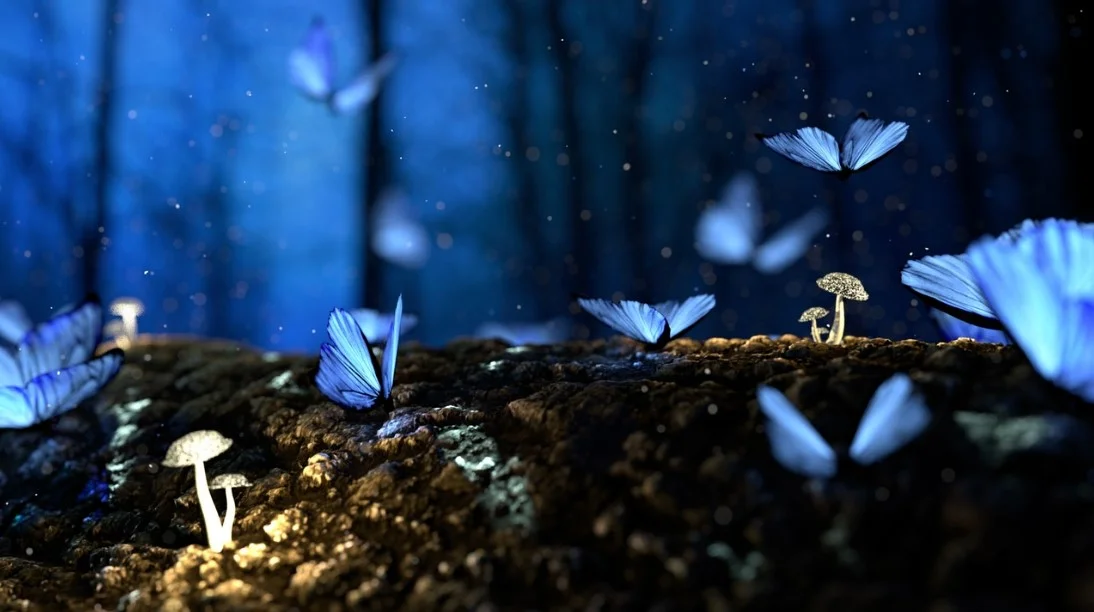Before humanity invented the light bulb, our ancestors maximized the benefits of daytime natural light to work, and used the darkness at night to sleep. The observation of the 24-hour solar day facilitated the natural synchronization of all biological life.
This ensured that humanity was healthy, alert, and productive.
With the dawn of electricity, however, humanity altered this routine by blurring the differences between daytime light and darkness at night.
We now stay awake during the night and sleep during the day! We have also created dark workspaces where we install artificial light to help us find our way during the day!
Of course, this is very bad for health and productivity and is becoming the norm for children in the 21st Century. Generation Alpha and Z kids in urban dwellings are being denied life fulfilments that come with visible light and true darkness.
Here’s the thing …
Light makes no sense unless it shines during the day when the sun is up. Likewise, darkness makes no sense unless it blackens the night, and the sun is down. And how we interact with the two natural gifts matters just as well.
We are supposed to spend a third of the day sleeping, and the rest of it staying awake. That adds up to a third of our lives we spend sleeping and the remaining two-thirds, staying away from our beds.
Sources of natural and artificial light and darkness:
We derive daytime natural light from the sun, fire, animals, and plants. The bio-luminescence emissions from the fire-fly, jellyfish, and plant forms such as mushrooms, are good examples of animal and plant light.
Artificial light is man-made and is majorly emitted by the electric bulb. Other sources of artificial light include the smartphone, computers, neon signs, etc.
Elsewhere, natural darkness is only available at night after the sun has set.
Benefits of natural light and darkness

1. Natural darkness for Melatonin and Growth Hormones
The day and night cycle stretches for 24 hours and is closely linked to the circadian rhythm – the internal human body clock.
The circadian rhythm synchronizes the human body for sleep at night, and alertness during the day to facilitate mental and physical wellbeing.
Darkness is given to us at night to facilitate the relaxation of the body, and allow important chemical reactions to take place.
The brain releases the melatonin and human growth hormone (HGH) during the night to optimize sleep and body growth.
- Melatonin is released by the pineal gland to regulate the sleep-wake cycle and make the body feel sleepy. The melatonin hormone, also called the ‘Dracula of hormones’, is released in the presence of natural darkness at night.
It is also a powerful antioxidant known to neutralize skin aging and the whole concept of oxidative stress.
melatonin production, together with topically applied exogenous melatonin or metabolites can be expected to represent one of the most potent antioxidative defense systems against UV-induced skin aging.
Melatonin and human skin aging
Continued use of artificial light in the night interferes with the activities of melatonin while the opposite is true.
Create optimal conditions for it to do its job by keeping the lights low before bed. Stop using your computer, smartphone or tablet—the blue and green light from these devices can neutralize melatonin’s effects.
Luis F. Buenaver, Ph.D., C.B.S.M.
- The Human Growth Hormone (HGH) is a protein released by the pituitary gland into the bloodstream to help the body grow in height and weight. This is important for children wishing to reach growth milestones.
The hormone also facilitates body metabolism, repair of broken cells, cell reproduction, and just like Melatonin, can speed up the healing process and slow down aging.
This natural hormone is only released at night, in the wake of quality and sufficient sleep.
2. Natural light for positivity and well being
The benefits of natural light are more apparent today because of the effects caused by over-reliance on artificial light.
A case in point is the lack of natural light during fall and winter, which is known to increase depression, irritability and suicidal thoughts, in what is known as Seasonal Affective Disorder (SDA).
Seasonal affective disorder, which is also called as winter depression or winter blues, is mood disorder in which persons with normal mental health throughout most of the year will show depressive symptoms in the winter or, less commonly, in the summer.
Role of serotonin in seasonal affective disorder
The lack of natural light is also associated with poor sleep and psychological problems. It can also interfere with how the cortisol hormone works.
Just like melatonin, cortisol is closely associated with the circadian rhythm. It is released in the morning to facilitate alertness during the day.
lack of exposure to natural light is related to high levels of cortisol and lower levels of melatonin at night, and these, in turn, are related to depressive symptoms and poor quality of sleep.
PUBMED
On a positive note, sufficient exposure to natural light is known to increase the amount of serotonin in the body, which in turn leads to a better mood and happiness.
Also called the ‘happy chemical’, serotonin is a neurotransmitter and a hormone to an extent, which is resident in the brain and the stomach.
It is tasked to transmit signals between brain cells to regulate the mood, anxiety, and happiness. Imbalances of serotonin levels may also impact sexual performance, sleep, and bone density.
While Serotonin is also derived from a healthy diet it is more beneficial when received through exposure to natural light and sleep.
3. Natural light for learning and productivity
Research shows how exposure to natural light facilitates effective learning in the classroom and productivity in the workplace.
Natural light in the classroom – with open windows, enhances mental performance. On the other hand, artificial lighting in the classroom can lead to depression, anxiety, and failure by learners to focus.
Research on that field has shown that the correct function of circadian rhythms release amongst other hormones, hormones that are responsible for the improvement of the “immediate memory between ten and twelve o’clock in the morning time” 5 , therefore contributes as a positive factor in the learning procedure of students during the school hours.
Natural light in learning environments
The same can be said of modern open office spaces that rely on artificial light.
A recent US and Canada study by Future Workplace entitled The Employee Experience, observed that
natural light and views of the outdoors were their most important office perks, ranking higher than onsite cafeterias, fitness centers, medical care and childcare.
5. Benefits of natural light and darkness for better health
When we stay awake at night and sleep during the day, we are disrupting the natural functions of melatonin, growth hormone, and serotonin.
While it is true we don’t all have identical circadian rhythms, it is important though we all receive the recommended number of sleep at night, and indulge in daytime natural light.
Lack of sleep leaves us dizzy and fatigued during the day and if this continues for days, weeks, and months, our bodies degenerate into a circadian disorder cycle.
Symptoms of the circadian disturbance may include,
- sleeping at work
- poor sleep at night
- fatigue
- depression
- anxiety
- jet lag
- poor critical thinking
- reduced productivity
- poor executive function skills
- poor focus
- workplace accidents and errors
- road accidents
When we sleep for fewer hours during the night and keep napping during the day, our bodies are denied the opportunity to grow well and repair body cells the natural way.
Below is a list of the benefits of natural light and darkness for overall health and well-being:
- Natural light is great for vitamin D
- wards of depression
- reduces the effects of related to artificial light
- skin and overall fast aging
- better blood circulation
- proper digestion at night
- mental wellbeing
- better focus
- more creative
- less stress, depression, anxiety
- better mood
- better immunity
The last word
We should control how artificial light is used at night to allow children to sleep well. We should also take advantage of natural light and avoid homes and office spaces lit up by artificial light.
Here is what happens when we embrace natural light and darkness:
- The more time we spend under natural visible light and darkness the less time we spend using electric light, specifically the blue and green light emitted by fluorescent tubes and bulbs.
- By learning, living, playing, and working in places that take advantage of natural light, we become less susceptible to dangers caused by artificial light.
- We also spend less money to maintain artificial lighting in our homes, offices, and schools.
- We experience less eye-strain when we interact with natural lighting.
The natural synchronization of natural daytime light and natural night-time darkness can lead to natural synchronization of the 24-hour solar-day activities for humans, animals, and plants.





Leave a Reply